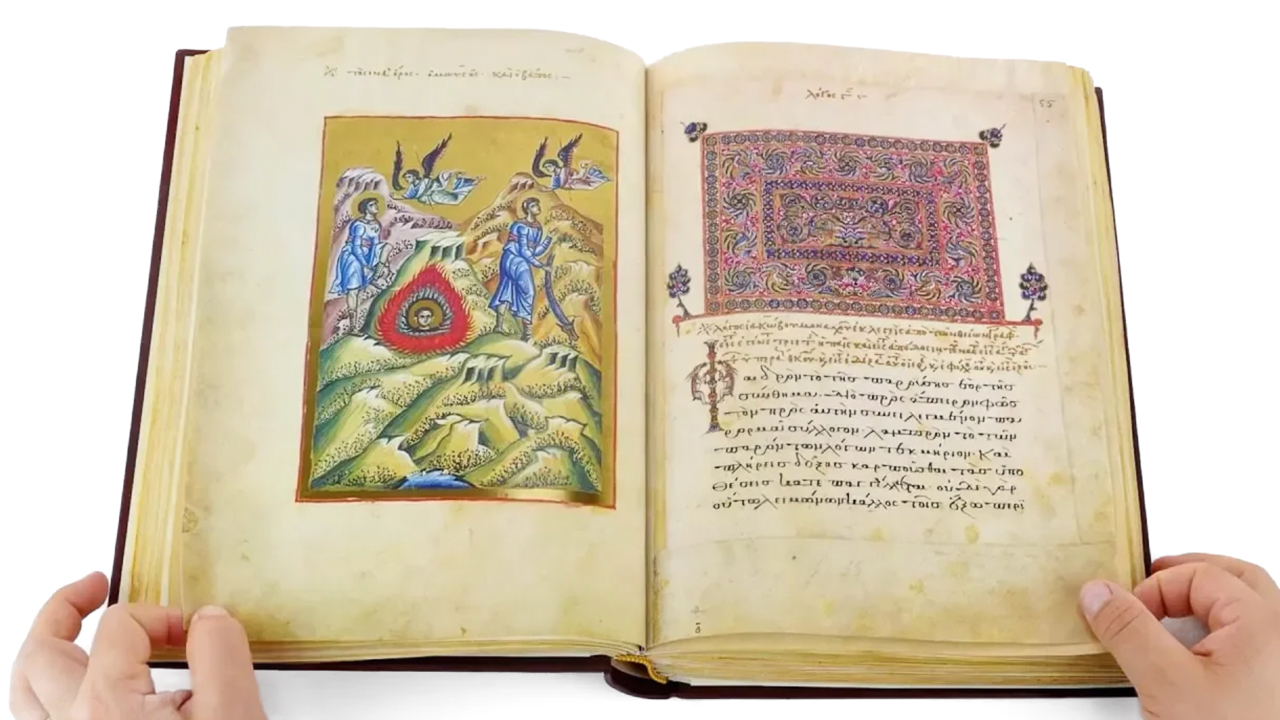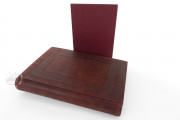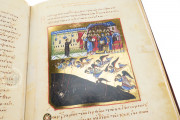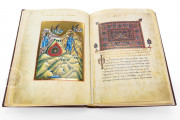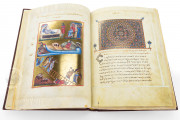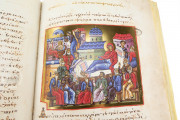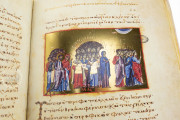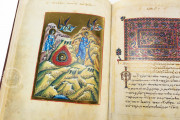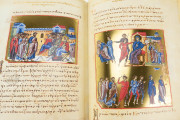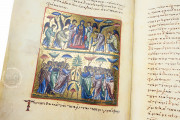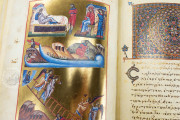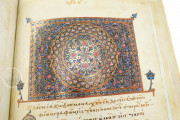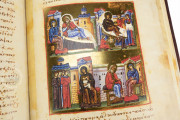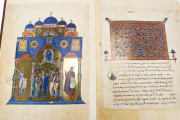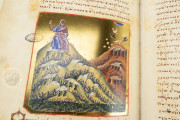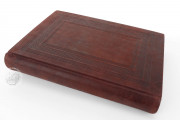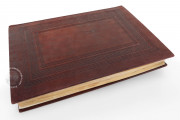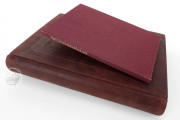This elaborately decorated volume of homilies on the early life of the Virgin Mary is considered to be the most extensive Byzantine cycle of images illustrating the life of the mother of Christ. Created in the second half of the twelfth century, the manuscript boasts artistry of exceptional quality with the images rendered in gold and vibrant colors. The series of six sermons was written by Iakovos, a monk of the Kokkinobaphos monastery, who was a prolific writer and whose first known works date to around 1120. The precise location of the Kokkinobaphos monastery is unknown, but the manuscript is connected to Constantinople and the imperial family of the Byzantine Empire.
Known as the Marian Homilies, this volume is one of two almost identical manuscripts (the other being Paris, Bibliothèque nationale de France, MS gr. 1208). The miniatures in both manuscripts were produced by an artist known as the Kokkinobaphos Master. It is unclear which of the two manuscripts was produced first, but the Vatican manuscript is both larger and has a more extensive cycle of images than the Paris manuscript. The Kokkinobaphos Master enjoyed the patronage of the imperial family and received many commissions from its members. As a result, his distinctive style was copied by aspiring artists.
Harmony in Gold
The 194 folios include eighty-two miniatures, all of which employ gold as a background. The paintings, six of which are full-page miniatures and many others of which are three-quarter page in format, often incorporate several scenes. The miniature of the Expulsion from Paradise, for example, shows the four rivers of Paradise, Adam and Eve, the Temptation, and the Expulsion in one illustration (fol. 35r).
Text and image are particularly closely related, providing evidence that the author, Iakovos, must have directed the complex imagery. Despite their complexity, the miniatures are aesthetically pleasing and harmonious.
One of the interesting aspects of the depictions is the many portrayals of the Virgin holding a spindle. This artistic conceit is taken from one of Iakovos's sources, the Protoevangelium of James, in which the Virgin is given purple fibers to weave into a thread for the Holy of Holies. This thread then became a symbol of the Incarnation.
Spinning and weaving for women of any rank in Byzantium were considered honorable occupations, and the depiction of the Virgin holding a spindle would have resonated with a female viewer. There are also depictions of the Virgin holding an open book. This would have been of particular interest to Eirene the Sebastokratorissa (d. 1151/52), sister-in-law of the emperor Manuel Komnenos, who was devoted to learning and study.
Calligraphic Script
The Greek script employed in the manuscript is a highly calligraphic form using brown/black ink. Sections of text are prefaced by colored, decorated initials using abstract, floral, or animal motifs.
An Imperial Patron
Eirene the Sebastokratorissa and her family were generous patrons of the arts and noted for commissioning illuminated manuscripts. Iakovos was a spiritual advisor to Eirene, and they exchanged many letters. Given that the subject of the homilies was female and Eirene's close connection to Iakovos, Eirene is considered to have commissioned the manuscript for her personal use. When and how the manuscript arrived at the Vatican Library is unclear.
We have 1 facsimile edition of the manuscript "Marian Homilies": Marien-Homilien facsimile edition, published by Belser Verlag, 1991
Request Info / Price
